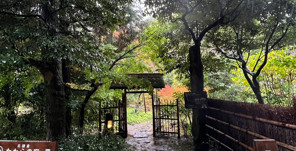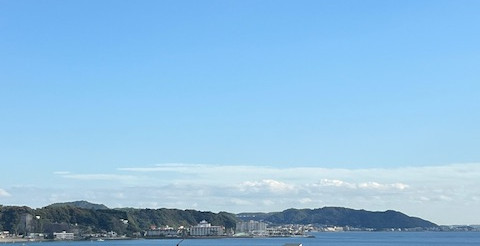大湯 間欠泉
唯一、実際に自噴している源泉である。昔は自然自噴だったが、ここまでで紹介してきた源泉が開発された影響で、勢いが細っていったようである。そこに関東大震災が追い打ちをかけ、止まってしまったらしい。現在は、人工的に自噴させている。ただ、一日に六回噴出していたという当時の様子を模しているため、常に湯が噴いているわけはない。ちなみに、冒頭の写真の緑の看板は、ここに立っている。
徳川家康が好んでいたようで、ここの湯をわざわざ江戸まで運んでいたそうである。明治には「噏滊館(きゅうきかん)」が建設され、蒸気が肺病に効能があるとの触れ込みが広がって、湯治客が多く訪れた。
"Big spring" "Geyser"
唯一、実際に自噴している源泉である。昔は自然自噴だったが、ここまでで紹介してきた源泉が開発された影響で、勢いが細っていったようである。そこに関東大震災が追い打ちをかけ、止まってしまったらしい。現在は、人工的に自噴させている。ただ、一日に六回噴出していたという当時の様子を模しているため、常に湯が噴いているわけはない。ちなみに、冒頭の写真の緑の看板は、ここに立っている。
徳川家康が好んでいたようで、ここの湯をわざわざ江戸まで運んでいたそうである。明治には「噏滊館(きゅうきかん)」が建設され、蒸気が肺病に効能があるとの触れ込みが広がって、湯治客が多く訪れた。
"Big spring" "Geyser"
This is the only source which actually erupts now. Though it naturally erupted in the old time, it gradually got weaker by the effect of the development of other
sources. After that, the big earthquake gave another blow to it. Then it stopped
to erupt. Currently, it is erupted artificially. However, the source doesn't always
erupt as it imitates the old time situation that it erupted 6 times in a day. By the way, the photo of the green billboard above stands here.
It is said that people carried this hot spring to Edo castle because Ieyasu
Tokugawa liked it especially. "Kyuuki-kan (Hotel)" was built at Meiji era. Since
the rumor that the steam was effective in the lung disease was expanded, a lot of the hot spring visitor came here.

ついでではあるが、ここは「市外電話」発祥の地である。市外電話?と思われる方も多いと思うが(私もそうである)、明治期の熱海には政治家や政府高官が諸用で泊まることが多く、常に東京と連絡が取れる必要があった。そのため、市外への回線が敷かれたそうである。
間欠泉の傍に、古い電話ボックスがひっそりと建っている。東京の京橋に日本で初めて設置された電話ボックスを、復元したものである。公衆電話そのものは現代のものなので、実際に使用することができる。
間欠泉の傍に、古い電話ボックスがひっそりと建っている。東京の京橋に日本で初めて設置された電話ボックスを、復元したものである。公衆電話そのものは現代のものなので、実際に使用することができる。
Incidentally, here is the original place starting the long distance call. A lot of
people would think "the long distance call ?" (me too). As many politician and
government officials stayed by some business, they always needed to get in touch with Tokyo. For the reason, the line the outside of the city was laid.
The old shape telephone box is built at the side of the geyser. It restored the
telephone box which was built in Kyobashi at the first time in Japan. You can
use the public telephone actually.

家康の湯
熱海を一巡りし、歩き疲れて帰途に就く。その疲労を、旅の終点が癒してくれる。駅前の足湯である。”家康 来 熱海400年”を記念して、2004年に建造された新しい天然温泉である。
新型コロナの時期は閉鎖されていたが、今は再開している。ハンドタオルくらいであれば、荷物にはならないだろう。あるいは、すぐそばの駅ビル「ラスカ」の3Fに100円ショップがある。ちょっと早いが、16時からお湯を抜いてしまうそうである。
熱海を一巡りし、歩き疲れて帰途に就く。その疲労を、旅の終点が癒してくれる。駅前の足湯である。”家康 来 熱海400年”を記念して、2004年に建造された新しい天然温泉である。
新型コロナの時期は閉鎖されていたが、今は再開している。ハンドタオルくらいであれば、荷物にはならないだろう。あるいは、すぐそばの駅ビル「ラスカ」の3Fに100円ショップがある。ちょっと早いが、16時からお湯を抜いてしまうそうである。
"Hot Spring of Ieyasu"
You would be tired to go around in Atami through a day. The end of the journey would heal the fatigue. It is "Ashi-yu (Hot spring for foot)" in front of Atami
station. It is the new natural Onsen which was built in 2004 for the anniversary
of 400 years since Ieyasu came Atami.
The time of Covid-19 had been closed. But it opens now. Onlu one hand towel wouldn't be a load, I think. Or there is "One-hundred-yen shop" on the third floor of the station building near here. The bath drain the hot water at 4 p.m. though it is early for the tourists.



福福の湯
"Hot Spring of Fukufuku"
Finally, there is "Hot spring for hand" in the shopping street, "Heiwa-dori (Peace street)" near Atami station. "Hnd-Onsen Fukufuku-no-yu" pulls up the source of 76 degrees from 300m underground and adjust about 40 degrees. It is effective in neuralgia, joint pain, bourns, cuts and so on. The small Buddhism statue
which smiles lovely sits next to the hot water. If you poured the hot water over
the head, the good luck would come to you.















